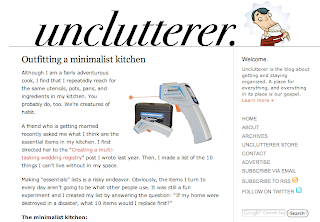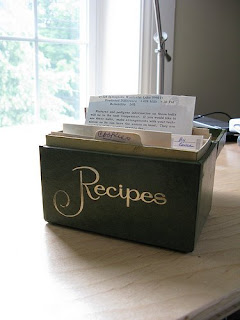Organized to be Your Best! by Susan Silver is a classic among organization books. It has been revised five times, most recently in 2006. This is a great overall read for someone seeking to streamline or put in place basic organizational systems, or for people who want to refresh their systems and maybe learn more about what’s available electronically. Silver does a great job of covering modern tools, from mobile devices to lower-tech tools like Mind Maps. Her book is organized in such a way so that you don’t have to read it all, only a few essential chapters and any you feel apply to you. This is so sensible—most people would prefer to read only those applicable sections and skip the rest, and Silver makes it easy to identify which ones you want to read. One thing I really like about this book is that Silver goes into equal detail for basic concepts, like to-do lists and charts, as well as for more advanced or newer topics, like personal information manager software. Her writing is clear and concise, and she stresses that not all of the solutions in the book will work for every reader. Yet, she has a terrific approach that is simple and I’m sure proves to be effective for most. Though the book is aimed at working professionals, the advice and concepts are easily applicable to any area of life that needs organizing.
Some great takeaways from this book are about messy desks. She talks about the “Accessibility Principle,” which is “The more often you use an item, the more accessible it should be.” Silver also talks about paper management and sets forth very clear guidelines for how one should approach paper sorting, categorizing, filing and managing. An oft-repeated organizing mantra is that avoiding decisions leads to clutter. Silver reiterates that here regarding paper clutter and insists, “Making decisions about paper shouldn’t be arbitrary. They need to relate specifically to your values and goals in life.” That requires you to figure out your values and goals, both personal and professional, before you can accomplish a fully functional paper management system.
I especially liked her chapter on collectors and collections, subtitled “How, When and What to Save.” I have a tendency to collect things. If I find something I like, I want to have more than one example of it, such as all of the books written by my favorite romance authors, or lots of little tins to store tea in. But I am not a person who collects useless detritus because I might need it one day. No sir. This chapter addresses moderate and severe collectors and walks us through the decision of what the keep and what to get rid of, then how to sort, store and maintain what we choose to keep. Her instructions are particularly useful for people who collect every piece of paper they come into contact with because they aren’t sure if they might need it. Following Silver’s lead, those people will be able to get rid of a vast amount of what they’ve been hanging on to.
One of the parts of organization nearest to my heart is that of organized computers. Silver, ahead of many of her field, dedicates multiple chapters to organizing and protecting digital information. As we move more and more of our daily lives and most of our information to a digital format, it because increasingly important to keep this area as organized as our hard data, and perhaps more so, in order to protect sensitive information and our hardware itself from outside forces. This area can be scary for many people, who many know they should organize and back up their digital files, but are paralyzed by technophobia and unable to do so. Silver says that computer data should be organized; you should be able to find it easily, back it up regularly and protect it from damage, loss or thieves. Silver does more than just tell you how to name your file folders, she actually shows you how the hierarchy of a folder system works so you know why you are doing what she suggests you do. She also has a lot of resources for protecting your digital information, both from potential damage or erasure, and from nefarious types who might want to infiltrate your systems.
Organized to be Your Best! is a well written and enormously helpful volume that will help any working professional order her approach to her workspace, work tools and work systems.
Lelah Baker-Rabe is a Los Angeles-based professional organizer. To discuss your organizing needs, call her at 818.269.6671 or email lelah@lelahwithanh.com











